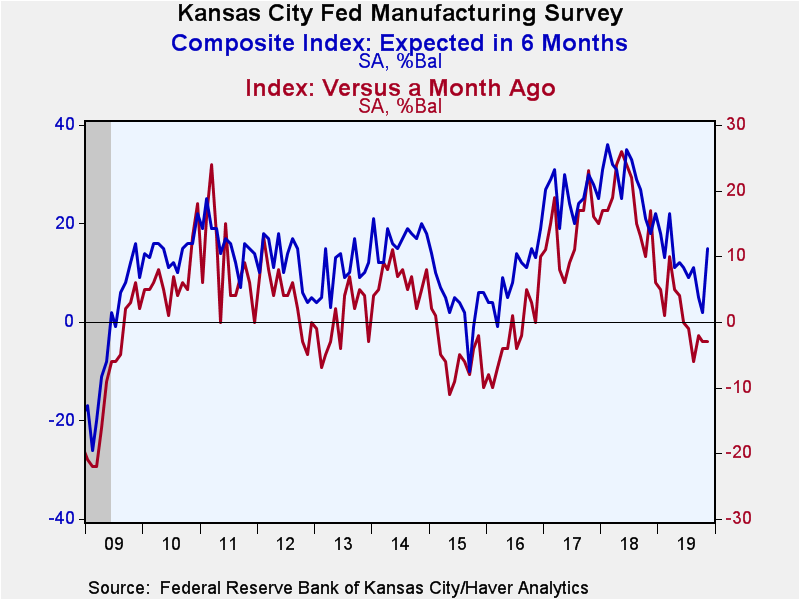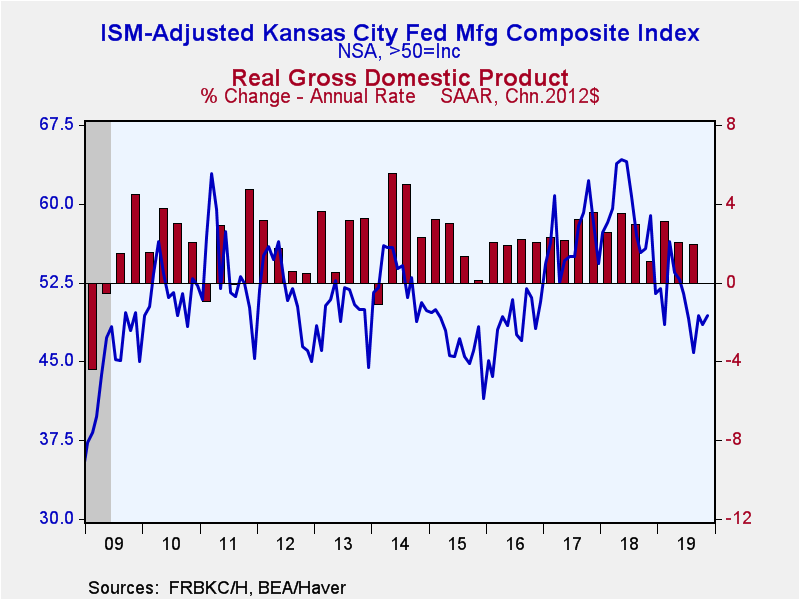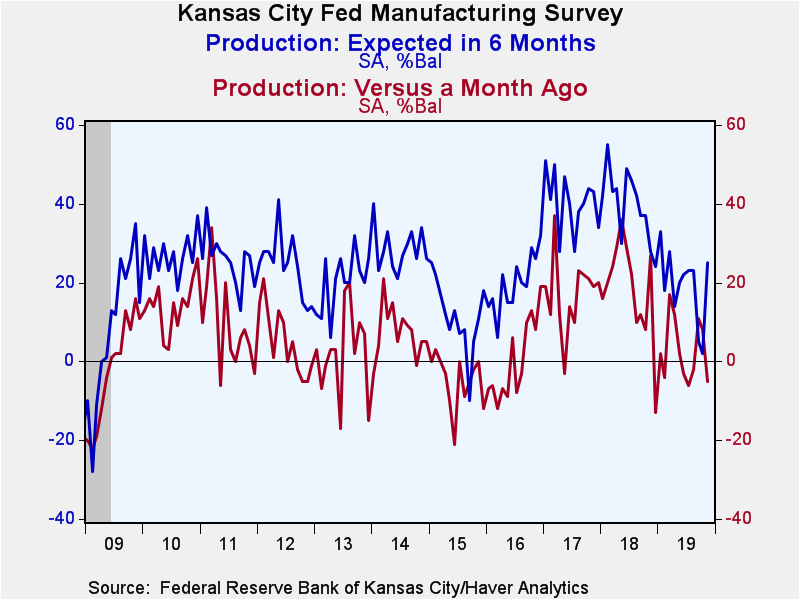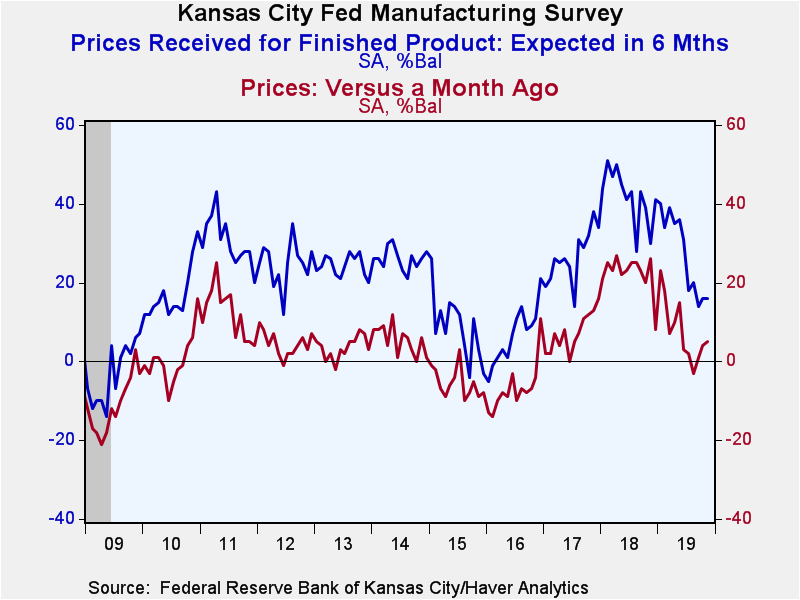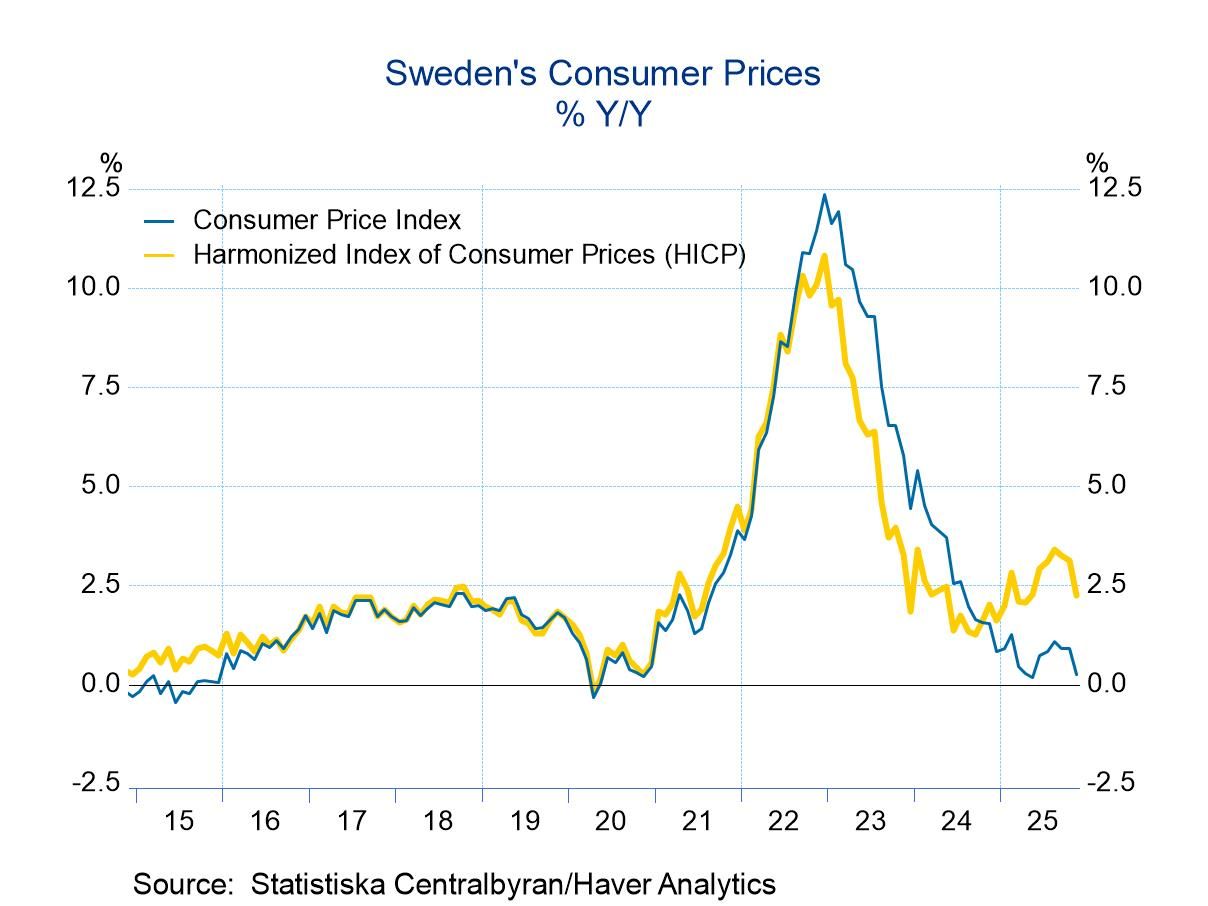 Global| Nov 22 2019
Global| Nov 22 2019Kansas City Federal Reserve Factory Index Steadies; Expectations Improve
by:Tom Moeller
|in:Economy in Brief
Summary
The Federal Reserve Bank of Kansas City reported that its index of regional manufacturing business activity remained below zero for the fifth consecutive month. During November, the index held steady at -3. The negative figures [...]
The Federal Reserve Bank of Kansas City reported that its index of regional manufacturing business activity remained below zero for the fifth consecutive month. During November, the index held steady at -3. The negative figures suggest declining business activity overall and remain below the high of 26 reached in May 2018. Despite this lethargy, the expectations series rose sharply to the highest level since March.
The ISM-Adjusted Index improved slightly to 49.4 (NSA) month and reversed its deterioration in October. It remained below the break-even level of 50 for the fifth consecutive month and remained below the high of 64.2 reached in May 2018. Since 2008, there has been a 56% correlation between this index and the q/q change in real GDP.
Components of the factory survey were mixed m/m. The shipments measure improved slightly but remained above zero for a third consecutive month. The new orders and materials inventory readings deteriorated to lesser degrees while the supplier delivery time series improved, indicating a sharp slowing of delivery speeds. The production measure weakened considerably, however, falling below zero for the first time in three months.
The employment reading fell and remained below zero for the fifth straight month, indicating a net decline in job levels. Seventeen percent (NSA) of respondents reported increased hiring while 26% reported a decline in job levels. The employee workweek index was below zero for the first time in four months. It was at the lowest level in three years.
The index of finished goods prices improved but remained well below the highs reached early last year. Fourteen percent (NSA) of respondents paid higher prices for finished products versus 29% twelve months earlier. Ten percent paid less versus five percent one year ago. The raw materials prices index rose sharply, above zero for the first time in four months. It remained sharply below last year's highs.
The sharp improvement in the expectations index overall was backed up by a surge in expected shipments to an eight-month high. New orders and production expectations also improved materially. While the expected average workweek measure jumped, the expected employment measure stayed put at its three-year low. The expected capital expenditure and exports measures also rose but not by enough to recapture declines in 2018.
The expected finished goods price index held steady m/m and remained well below the high reached in February 2018. The expected raw materials price figure also rose modestly.
The diffusion indexes are calculated as the percentage of total respondents reporting increases minus the percentage reporting declines. The survey included 94 responses from plants in Colorado, Kansas, Nebraska, Oklahoma, Wyoming and northern New Mexico. Data for the Kansas City Fed Survey can be found in Haver's SURVEYS database.
Riders on the Storm from the Federal Reserve Bank of San Francisco can be found here.
| Kansas City Federal Reserve Manufacturing Survey (SA) | Nov | Oct | Sep | Nov '18 | 2018 | 2017 | 2016 |
|---|---|---|---|---|---|---|---|
| Conditions Versus One Month Ago (% Balance) | -3 | -3 | -2 | 17 | 18 | 14 | -2 |
| ISM-Adjusted Composite Index (NSA) | 49.4 | 48.5 | 49.4 | 58.9 | 58.9 | 56.7 | 48.5 |
| New Orders Volume | -3 | -13 | -3 | 22 | 17 | 17 | -2 |
| Number of Employees | -9 | -6 | -13 | 9 | 17 | 15 | -6 |
| Production | -5 | 8 | 11 | 27 | 18 | 17 | 0 |
| Prices Received for Finished Product | 5 | 4 | 1 | 26 | 22 | 7 | -7 |
| Expected Conditions in Six Months | 15 | 2 | 5 | 18 | 28 | 26 | 9 |
| New Orders Volume | 28 | 11 | 13 | 26 | 35 | 35 | 19 |
| Number of Employees | 4 | 4 | 13 | 23 | 33 | 31 | 8 |
| Production | 25 | 2 | 5 | 28 | 40 | 40 | 20 |
| Prices Received for Finished Product | 16 | 16 | 14 | 30 | 42 | 27 | 7 |
Tom Moeller
AuthorMore in Author Profile »Prior to joining Haver Analytics in 2000, Mr. Moeller worked as the Economist at Chancellor Capital Management from 1985 to 1999. There, he developed comprehensive economic forecasts and interpreted economic data for equity and fixed income portfolio managers. Also at Chancellor, Mr. Moeller worked as an equity analyst and was responsible for researching and rating companies in the economically sensitive automobile and housing industries for investment in Chancellor’s equity portfolio. Prior to joining Chancellor, Mr. Moeller was an Economist at Citibank from 1979 to 1984. He also analyzed pricing behavior in the metals industry for the Council on Wage and Price Stability in Washington, D.C. In 1999, Mr. Moeller received the award for most accurate forecast from the Forecasters' Club of New York. From 1990 to 1992 he was President of the New York Association for Business Economists. Mr. Moeller earned an M.B.A. in Finance from Fordham University, where he graduated in 1987. He holds a Bachelor of Arts in Economics from George Washington University.


